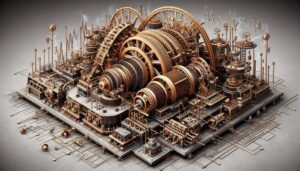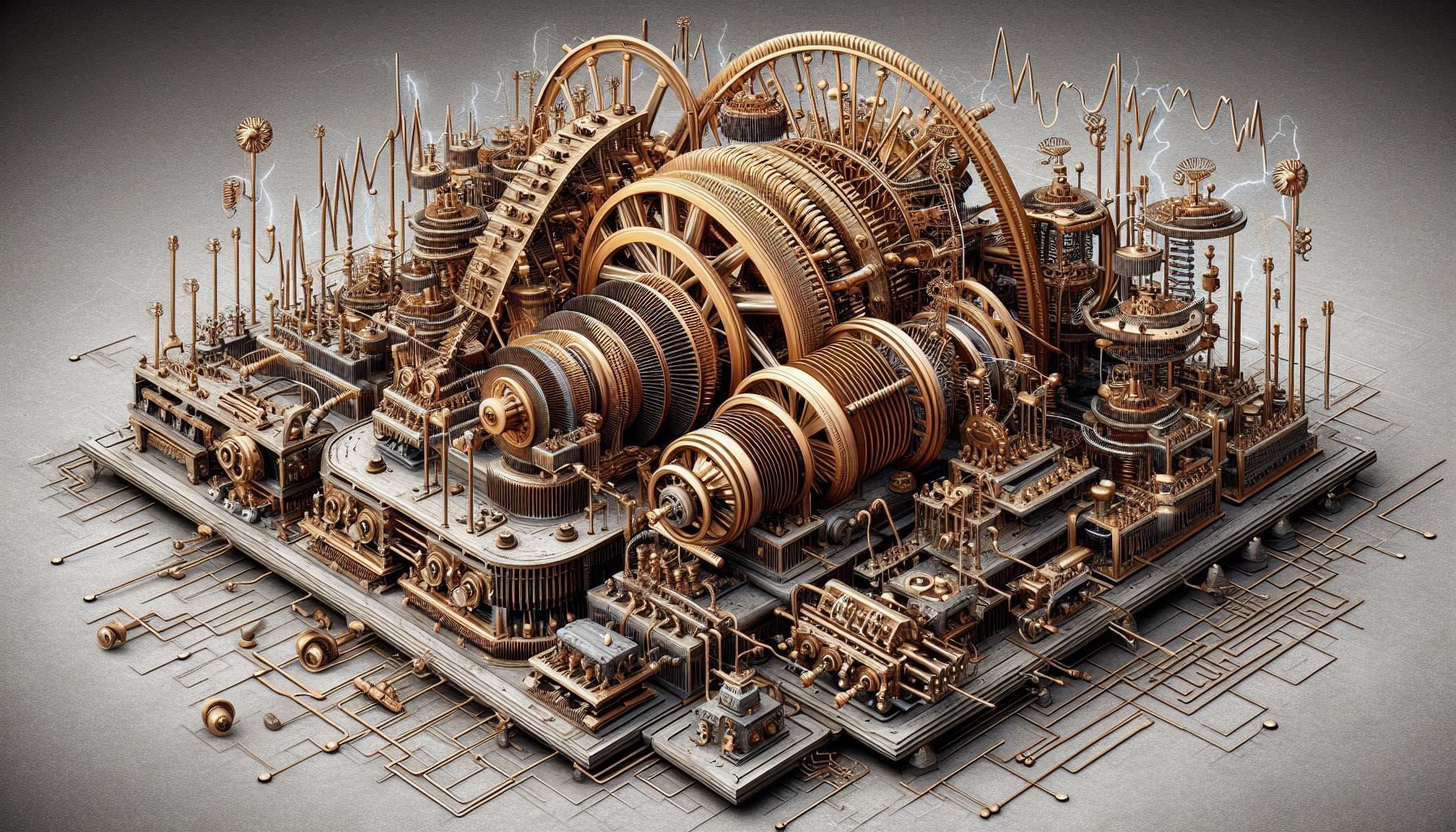
Tesla’s earthquake machine, showcasing its mechanical components and resonance effects.
Introduction
Nikola Tesla, the brilliant inventor and electrical engineer, made groundbreaking contributions to electricity and electromagnetism. Among his many inventions, one of the most intriguing was his so-called “earthquake machine.” This device, known as the Tesla Oscillator, has fascinated people for decades. In this article, we will explore its origins, workings, and the myths surrounding it, while considering its implications for modern science and technology.
The Origins of the Tesla Oscillator
Tesla developed the oscillator in the late 19th century while experimenting with mechanical resonance and vibrational energy. He believed that every object in the universe has a natural frequency. If an object resonates at that frequency, it can produce significant effects. This principle resembles how a singer can break a glass by hitting the right note.
Tesla designed the oscillator to generate mechanical vibrations at specific frequencies. He claimed that tuning the device to a structure’s natural frequency could cause that structure to resonate and potentially fail. Tesla reportedly conducted experiments that demonstrated the oscillator’s ability to produce vibrations strong enough to be felt in nearby buildings.
The Alleged Earthquake Incident
One famous anecdote about Tesla’s oscillator involves an incident in 1898 in New York City. Tesla claimed that while conducting experiments, he inadvertently caused a small earthquake. The vibrations from the machine rattled windows and alarmed residents nearby.
While no concrete evidence supports the claim that Tesla’s oscillator caused an actual earthquake, the incident has fueled speculation. Some people suggest that Tesla’s work could help predict or even control earthquakes, although these ideas remain largely fictional.
How the Tesla Oscillator Works
The Tesla Oscillator operates on the principle of resonance. When an object experiences vibrations at its natural frequency, it absorbs energy and amplifies those vibrations. Tesla’s device creates mechanical oscillations that can match the natural frequency of various structures.
The oscillator consists of a mechanical system with a mass and a spring. By adjusting the mass and the spring’s stiffness, Tesla could change the frequency of the oscillations. When activated, the oscillator generates vibrations that transmit through the ground and into nearby structures.
The Science Behind Resonance
Resonance is a well-documented phenomenon in physics. It occurs when an object experiences periodic forces at a frequency matching its natural frequency. This can lead to dramatic increases in amplitude, potentially causing structural failure if the vibrations are strong enough.
A classic example of resonance is the Tacoma Narrows Bridge, which collapsed in 1940 due to wind-induced vibrations that matched the bridge’s natural frequency. Tesla’s oscillator operated on similar principles, albeit in a controlled environment.
The Myths and Misconceptions
Despite the scientific basis for Tesla’s oscillator, many myths and misconceptions have arisen. Some people believe that Tesla aimed to create a weapon capable of causing earthquakes at will. However, Tesla primarily focused on exploring resonance and vibration for various applications, including energy transmission.
Another common myth suggests that Tesla’s oscillator was a secret government project or that powerful interests suppressed it. While Tesla faced challenges in securing funding and support for his inventions, no evidence suggests that anyone deliberately hid his work on the oscillator.
Modern Implications and Applications
While Tesla’s earthquake machine may not have lived up to its sensationalized reputation, the principles behind it have found applications in various fields. Engineers and architects now use resonance principles to design buildings and structures that can withstand earthquakes. By understanding the natural frequencies of materials, they create designs that minimize the risk of resonance-related failures.
Additionally, researchers analyze vibrations and resonance in fields like seismology to better understand earthquakes and their impacts. Tesla’s work has indirectly contributed to advancements in these areas, showcasing the lasting influence of his ideas.
Conclusion
Nikola Tesla’s earthquake machine, or oscillator, remains a fascinating topic that blends science, myth, and speculation. While claims of causing earthquakes may be exaggerated, the underlying principles of resonance and vibration are well-established in physics and engineering. Tesla’s innovative spirit and relentless pursuit of knowledge continue to inspire scientists and inventors today.
As we explore Nikola Tesla’s legacy, we must separate fact from fiction and appreciate the true impact of his work on modern science and technology. The Tesla Oscillator serves as a reminder of the power of resonance and the potential for innovation that lies within scientific exploration.
